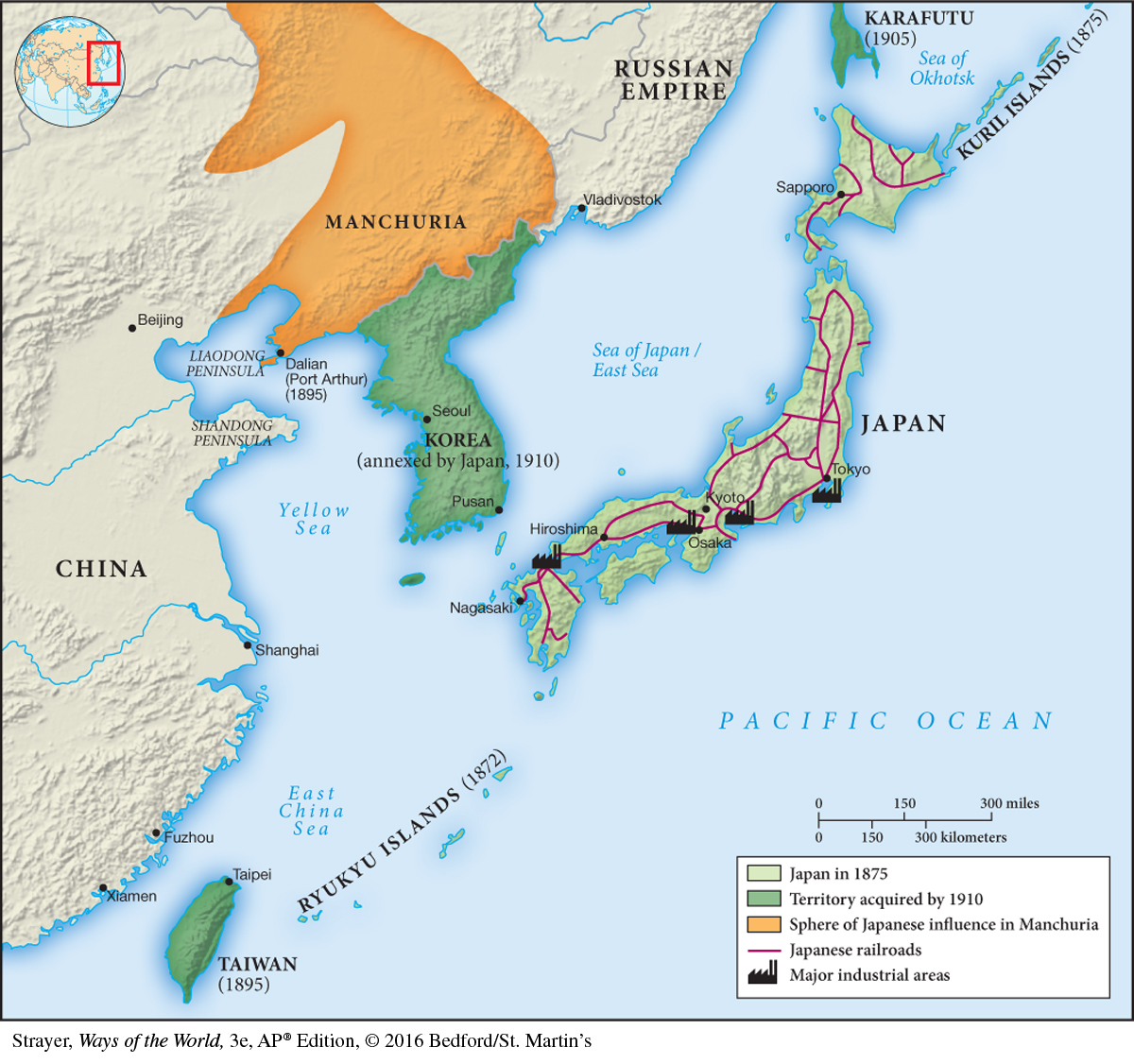Japan and the World
Japan’s modern transformation soon registered internationally. By the early twentieth century, its economic growth, openness to trade, and embrace of “civilization and enlightenment” from the West persuaded the Western powers to revise the unequal treaties in Japan’s favor. This had long been a primary goal of the Meiji regime, and the Anglo-
Guided Reading Question
▪CONNECTION
How did Japan’s relationship to the larger world change during its modernization process?
Not only did Japan escape from its semi-colonial entanglements with the West, but it also launched its own empire-building enterprise, even as European powers and the United States were carving up much of Asia, Africa, and Pacific Oceania into colonies or spheres of influence. It was what industrializing Great Powers did in the late nineteenth century, and Japan followed suit, in part to compensate for the relative poverty of its natural resource base. Successful wars against China (1894–1895) and Russia (1904–1905) established Japan as a formidable military competitor in East Asia and the first Asian state to defeat a major European power. Through those victories, Japan also gained colonial control of Taiwan and Korea and a territorial foothold in Manchuria. And in the aftermath of World War I, Japan acquired a growing influence in China’s Shandong Peninsula and control over a number of Micronesian islands under the auspices of the League of Nations. Japan’s entry onto the broader global stage was felt in many places (see Map 19.3). It added yet one more imperialist power to those already burdening a beleaguered China. Defeat at the hands of Japanese upstarts shocked Russia and triggered the 1905 revolution in that country. To Europeans and Americans, Japan was now an economic, political, and military competitor in Asia.

In the world of subject peoples, the rise of Japan and its defeat of Russia generated widespread admiration among those who saw Japan as a model for their own modern development and perhaps as an ally in the struggle against imperialism. Some Poles, Finns, and Jews viewed the Russian defeat in 1905 as an opening for their own liberation from the Russian Empire and were grateful to Japan for the opportunity. Despite Japan’s aggression against their country, many Chinese reformers and nationalists found in the Japanese experience valuable lessons for themselves. Thousands flocked to Japan to study its achievements. Newspapers throughout the Islamic world celebrated Japan’s victory over Russia as an “awakening of the East,” which might herald Muslims’ own liberation. Some Turkish women gave their children Japanese names. Indonesian Muslims from Aceh wrote to the Meiji emperor asking for help in their struggle against the Dutch, and Muslim poets wrote odes in his honor. The Egyptian nationalist Mustafa Kamil spoke for many when he declared: “We are amazed by Japan because it is the first Eastern government to utilize Western civilization to resist the shield of European imperialism in Asia.”17
Those who directly experienced Japanese imperialism in Taiwan or Korea no doubt had a less positive view, for its colonial policies matched or exceeded the brutality of European practices. In the twentieth century, China and much of Southeast Asia suffered bitterly under Japanese imperial aggression. Nonetheless, both the idea of Japan as a liberator of Asia from the European yoke and the reality of Japan as an oppressive imperial power in its own right derived from the country’s remarkable modern transformation and its distinctive response to the provocation of Western intrusion.